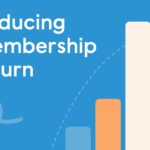If your mind draws a blank when hearing the terms Customer Relationship Management System (CRM) or Association Management Software (AMS), you’re not alone. This is especially true when describing their roles and defining their differences in terms of what they offer a company or an association. In actuality, the role these two types of software can play for your brand can be blurry as they can often act interchangeably as both systems are designed to collect and store data. However, it is at the heart of the software, the why behind it, that the differences become most obvious. Thankfully, the following information will look deeper into the nuances of these types of software. This will help you determine once and for all what is best for your association based on a variety of factors.
Why Associations Need an AMS System or CRM Software
Software that manages customer information is pretty much a necessity in today’s digitally based world. Consequently, as an association, you need some form of software to manage your member databases, facilitate customer relationships through customer communication and even to process payments. When selecting the right association software for these purposes, there are two main choices: a customer relationship management software product called a CRM, or an association management software system called AMS. Both have benefits for associational usage. Therefore, learning the differences between them and how they should uniquely improve your customer relations as an association is a good way to determine which system is best for your association. Today, we will look deeper into what each offers, explain the nuances of each type of software, and help you make the right choice for your association. Read on to learn more:
What is Customer Relationship Management Software (CRM)?
First up, let’s consider what a customer relationship management software system can do for your association. To put it simply, a CRM is a data-driven, integrated tool that will help you facilitate customer relationship management. In other words, it is software that stores all your customers’ or member data, including potential customers, prospects, or members that might be interested in what you offer, as well as storing information on past and present customers.
The Core Functions of a CRM
The core function of a CRM is to give you a bird’s eye view of all customer interactions with your association or brand. It is also the integration of internal communication and processes that directly impact customers or has to do with interactions with customers. Finally, it manages all these relationships, allowing you to properly identify opportunities to nurture prospects. To put it best, CRM is best used for long-term sales and helps you build stronger relationships with your customers. Some of what a CRM does includes managing information like the following:
- Contact Lists: This, obviously, is information about your customers or members.
- Interactions: This covers what has happened with each member, from emails and phone calls to website leads.
- Engagement History: This part of CRM keeps up with a customer’s actions of engagement. It tells you if they have filled out a form, attended an event of yours or purchased from you at some point in the past.
- Lead Score: This is a probability, predicting the likelihood that a prospect will eventually turn into a customer.
The following are more in-depth functions of a CRM and what it can do for your association:
Lead Management
As the most important function of CRM, lead management is one aspect of CRM that can give your association a positive edge over competitors. A CRM that is well-designed and utilized will ensure you capture all lead details from all your various channels, including emails, social media, and lead magnets. A good CRM system does more than just list leads though; it actually scores them appropriately, so you can monitor them throughout the sales cycle and take action at the right time to nurture these relationships. It can also indicate if a potential customer or member is not a good lead based on conversion odds, which frees up any time you would waste on an unqualified lead.
Content Management
Next, a CRM effectively stores customers’ details, including contact numbers, email addresses, names, social media profiles, and more in an easily searchable database. In addition, a CRM creates a profile of each customer, allowing you to save individual email conversations and calls. Some CRM systems even have a smart list contact feature that allows you to easily access this data without having to manually filter through it. This can be a time-saver when trying to find a particular member or information on a particular member.
Analytics and Reporting
A CRM system will also offer analytics and reporting, often appearing on a database. This means you can track key customer or membership engagement metrics like retention rates, conversion, leads, and ROI. These reports feature a big-picture look with the option of a closer, more narrowed-in look. It can instantly tell you how your association is doing in a variety of areas. This extremely useful data can then be shared to help your association make the right decisions and promote more effective collaboration.
Automation
Last but certainly not least, a CRM system offers a level of automation that is immensely helpful for associations. Some of what it can do includes syncing contacts with campaigns, which creates seamless automation. It can either be further segmented based on your association’s needs. In other words, you can also use it to automate workflow, the sales department, marketing, and customer support, among other processes.
What is Association Management Software (AMS)?
Next is the Association Management Software, or AMS. This system is designed to free up your association from various administrative duties, allowing your team to concentrate more on engaging members. It can include data storing, including processing membership, managing committees, organizing events, collecting payments, fundraising, and more. As it states in its name, an AMS is specifically designed for use by an association. As such, it is more specifically designed for these purposes than a CRM.
The Core Functions of an AMS
Similar to a CRM, an AMS effectively utilizes customer data to provide each member of your association with the best experience possible. It helps your team manage the day-to-day tasks, like your website, events, emails, memberships, and more, freeing you up to do other tasks related to your association and its growth. You can also utilize a CRM in other systems, extending their capabilities even more. This all-in-one solution can help you in a variety of ways to grow your association by streamlining various membership processes and giving you more oversight over your association’s revenue. The following are some core functions provided by AMS software:
- Members lapse.
- Attended events by members.
- Subscription history.
- Contact information on members.
While the way you use an AMS system will depend on the features you choose, some of the most commonly utilized functions of an AMS are listed below:
Management of Association Website
One important function of an AMS system is to build up your association’s website. Integrating this software can help you construct a very functional and professional website. You can also use it to automate several pages, such as creating a calendar, with subpages for each event, event registration pages, and members’ subscriptions, as well as member directories and profiles. It is a supplementary website builder, allowing you to present consistent branding throughout all your associations’ website pages. You can even automate membership fee and funds collection and secure payment details via an encrypted process for member safety. AMS can also send members reminders for subscription fees and flag lapsed subscriptions, allowing your sales team to contact the member. The website management feature is immensely important for associations, as you know, since your website is a big part of your reputation online and your branding.
Improved Member Communications
While your team might attempt to stay on top of all communication with members, maintaining consistent communication can be difficult. Thankfully, with AMS software, you can send automated event invitations, newsletters, emails, and even community updates all through the system. This means you won’t have to remember to update members ever again, as the system will be completely automated. Improved member communications will ensure that you don’t let any member slip through the cracks as it were and go unnoticed and that every member is highly valued.
Creating Member-Exclusive Content
A good AMS system will also provide your association with access to various resources like jobs, educational courses, white papers and more. These resources are only available to members and are shared via job boards or an integrated LMS. Your members will love these exclusives and having access to this can elevate your standing among other associations as well.
Why the AMS vs CRM Differences Matter for Associations?
When it comes to choosing between a CRM or an AMS for your association, sometimes it’s helpful to look at what they do differently to make that decision. After all, both systems store member or customer data and help you manage said data. However, they differ in their core focus, capabilities, and most importantly, their target audience. Therefore, you should consider these main elements and note how these systems differ:
- Target Audience: A CRM has a larger target audience. It can be used by businesses to improve customer relationships. Conversely, an AMS is exclusively built for associational purposes. Therefore, this can be looked at as a positive point towards CRM or one that enhances the use of AMS because it is designed primarily for membership storage and associational usage.
- Primary Focus: An AMS primarily focuses on managing the day-to-day membership workflow of an association, including memberships, lapse, communication and more. A CRM instead focuses on creating opportunities for customer relationship growth. It can be used for membership purposes, but that is not what it is designed to oversee.
- Analytics: A CRM uses data to analyze leads and score them appropriately. An AMS system collects data pertaining to memberships and associations and primarily provides data based on email open rates, numbers of lapsed members, attendee check-ins, and event registrations.
- Website Management: An AMS system provides back end support to website management as this is a significant part of an association’s workflow. This management goes hand-in-hand with campaign creation and events, allowing you to be consistent throughout all platforms. A CRM does not provide website creation support. They instead specialize in data analytics, business intelligence, and the ability to search through data.
Questions Associations Should Consider Before Implementing AMS or CRM
Now that you have looked deeper into what CRM and AMS systems offer and how they differ, it’s helpful to consider some basic questions before moving further. If you are buying a software system for your association or membership organization, you should ask the following questions before making up your mind on which type of software would be best for your needs:
- Does the software you are considering have the support needed to integrate with the functions of your association? If your association needs website help, then, obviously, an AMS would be better suited. If you want to treat your association as a business, then more customer-focused software might work best.
- Is the software cloud-based? Cloud-based software offers an immense level of possibilities and comes with a decreased cost overall. More and more businesses are opting for cloud-based systems simply due to their ease of integration.
- Is the software within your budget limits? Thankfully, today, software is becoming more and more affordable for all sorts of businesses as well as associations. However, your budget and its limits are still factors you need to consider when deciding on a software system.
- Does the software you are considering have post-go-live support when you integrate it? Once you get going with any software, some questions will inevitably come up. If you choose a system that offers continued support, you never have to worry about integration problems.
- Are there reporting metrics available that would benefit your association or membership? When choosing software for your association, you want to make sure that any metrics it will report will be useful to you. Therefore, make sure that you know what type of data you will be given and determine if that would be helpful.
- Is the software compatible with tools that you use already and plan to continue to use? If you already have tools that you are using to oversee your membership and/or association, you want to make sure that any new software works with what you already use.
- Does the software offer scalability and flexibility ideally suited for your association? The software you are considering should be flexible and scalable to your association’s needs. Otherwise, it will make no real difference to your day-to-day operations.
Explore our updated list of the Top 12 CRMs for Associations & Membership Organizations.
Download our AMS Selection Guide
If you still aren’t sure about what type of software would be best suited for your association, but are leaning more towards an AMS for your association’s needs, feel free to download our AMS Selection Guide. This comprehensive and helpful resource will guide you through the process of choosing the right Association Management System AMS for your association. Through this comprehensive guide you will learn even more about the benefits offered by an AMS for your association and how to select an AMS that works seamlessly with your association, and provides all your software needs.
















